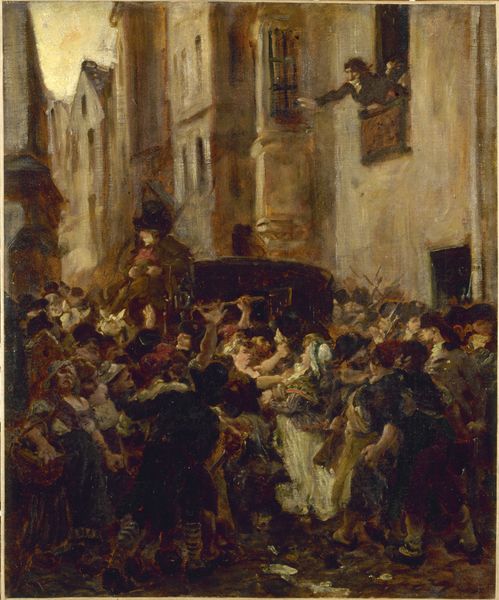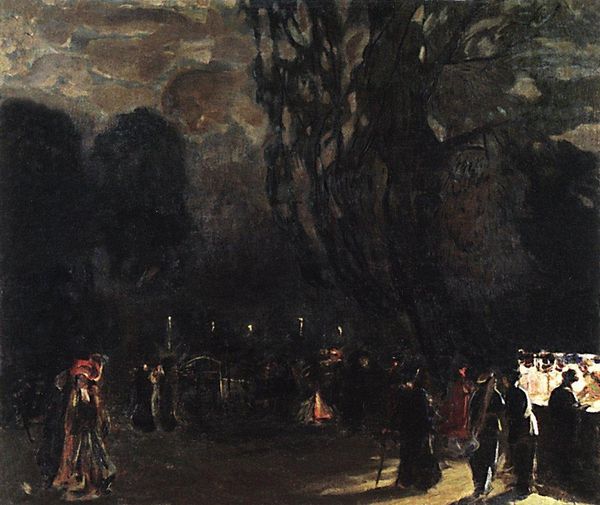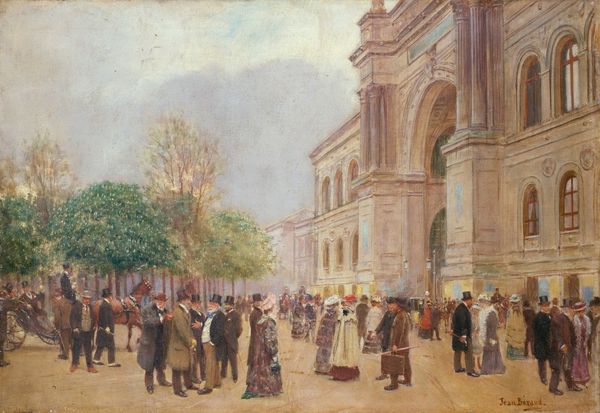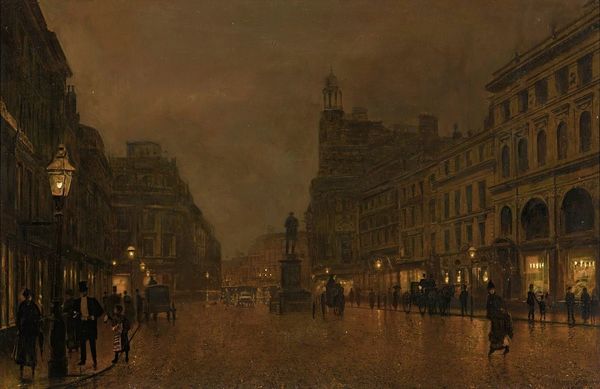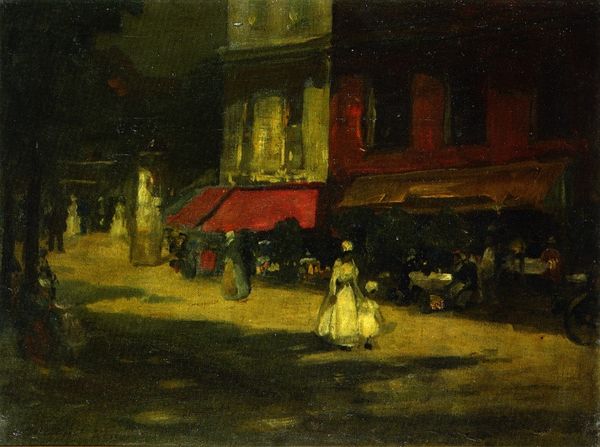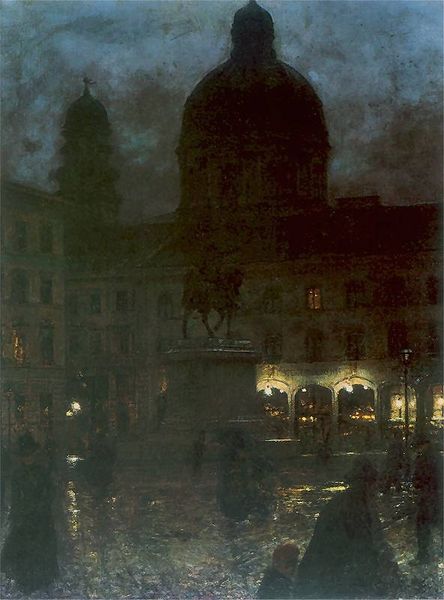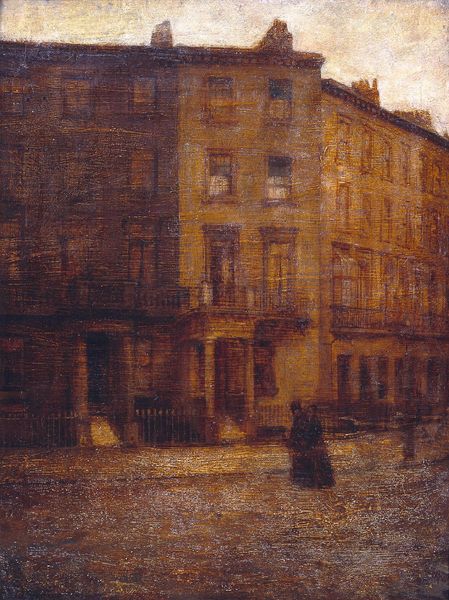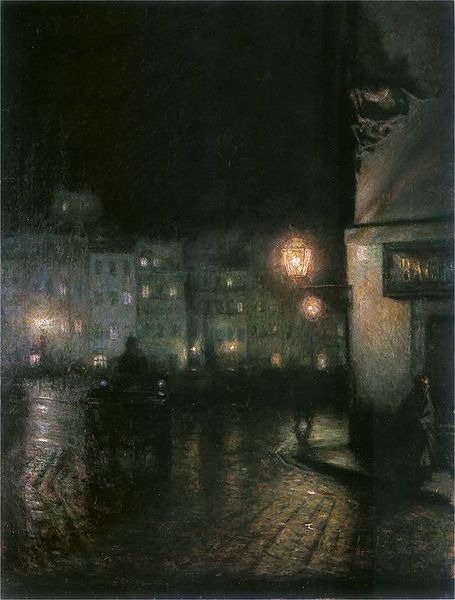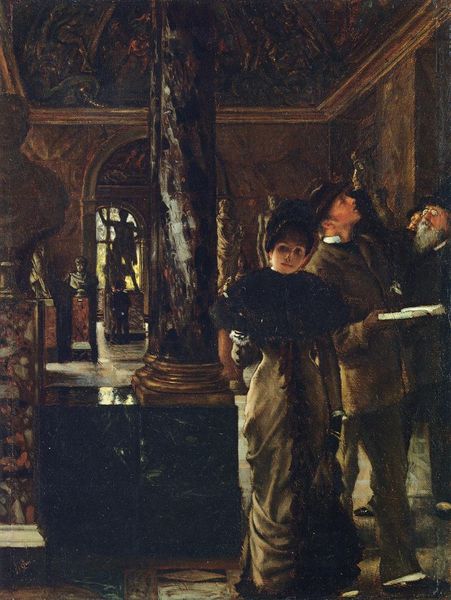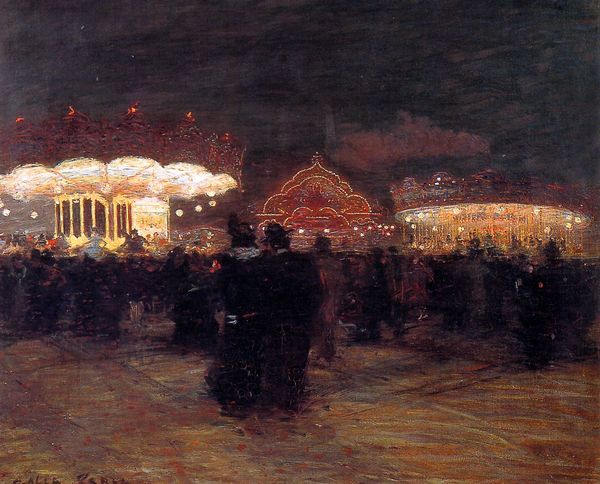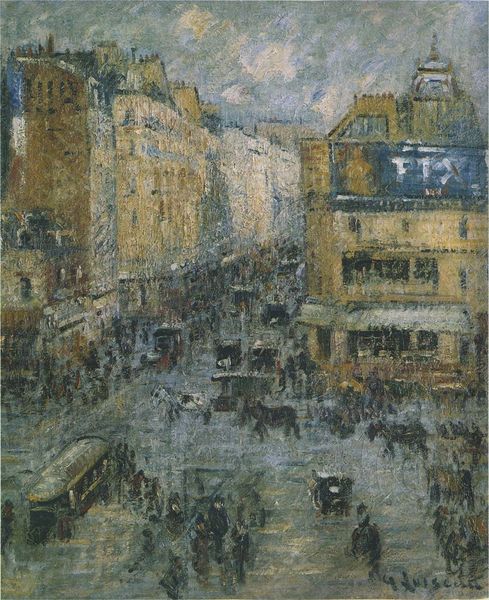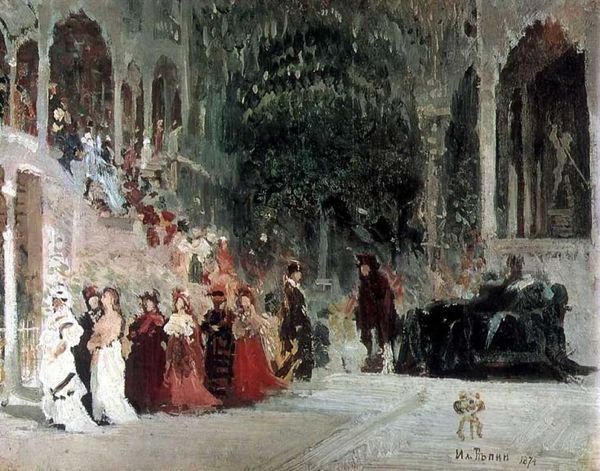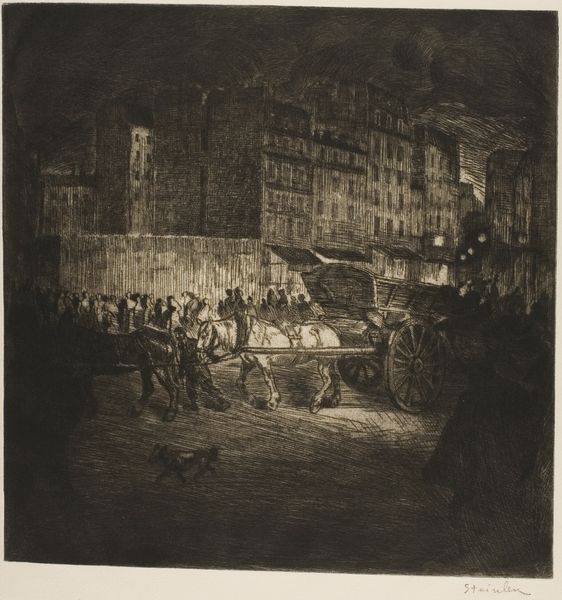
painting, oil-paint
#
impressionistic
#
baroque
#
painting
#
impressionism
#
oil-paint
#
cityscape
Copyright: Public domain
Editor: This is Aleksander Gierymski’s “Opera paryska w nocy”, made using oil paint, but no exact date is provided. It has a dark, almost mysterious quality; the figures are indistinct, swallowed up by the night. What social or historical dynamics do you think were in play during its creation? Curator: That's a great initial observation! Given the late 19th-century context, consider how this work might be responding to the rapid urbanization and social stratification of Paris. The painting seems to shroud its subjects in shadow. How might the painting reflect the lived experiences of marginalized communities who found themselves at the fringes of that glamour? Editor: I see your point. It’s like the darkness is obscuring those stories, making visible only those touched by the light of prosperity. Is Gierymski perhaps subtly critiquing the spectacle of Parisian society? Curator: Exactly! He's capturing a sense of alienation. It invites a deeper reflection on who is included and excluded from the narrative of progress and artistic expression. Also, who had access to places such as the Opera House and under which conditions? Who might the artist exclude through their gaze? Editor: This makes me rethink the purpose of the bright light and how that impacts everything around it. Perhaps I’ve focused too much on the mystery and not enough on social commentary. Curator: Precisely. Think about how power and visibility are intertwined in his depiction. It speaks volumes about class, privilege, and access during that period, don’t you think? Editor: Absolutely. Considering that shift in perspective makes it a completely different artwork, really. Curator: I hope this has changed your view of painting forever. I really believe thinking critically is an essential way of comprehending art's social impact.
Comments
No comments
Be the first to comment and join the conversation on the ultimate creative platform.
